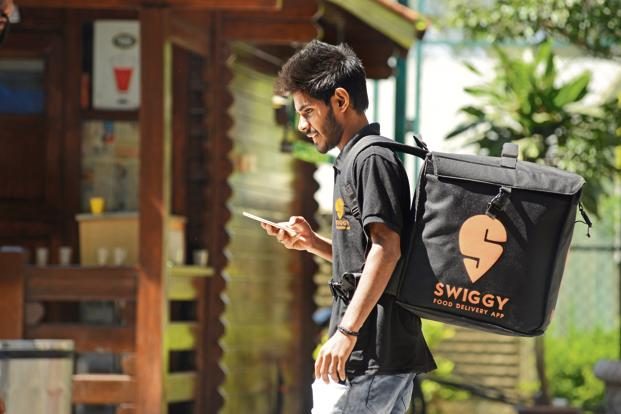NEW YORK — When Amazon chief Jeff Bezos bought The Washington Post in 2013, the publication had 12 overseas bureaus. That will expand to 26 locations this year, as the paper accelerates its transformation from a must-read inside the Beltway to a global publication with an increased focus on international subscribers.
Two new breaking-news hubs that the company will establish this summer in Seoul and London are two examples of this shift. Separate from the foreign bureaus, the two news hubs will be extensions of the Washington newsroom, with the specific goal of maintaining up-to-the-minute coverage during the U.S. nighttime and weekends, Foreign Editor Douglas Jehl told Nikkei Asia.
On Wednesday, the company announced details of the Seoul news hub, appointing Kendra Nichols from within the company as hub editor, and hiring Katerina Ang, who has been a contributing writer for Nikkei Asia, to be breaking-news editor.
The hubs in Seoul and London “are focused on covering the news wherever it takes place and doing so in the right time zone,” Jehl said. Seoul will be a team of 10, while London will have nine staff, including four breaking-news reporters, two breaking-news editors, a visuals editor, an audience editor and at least one multiplatform editor.
Half of the breaking-news reporters will watch over U.S. news, while the other half covers international news. That breakdown reflects the function of the new hub. The goal is to both cover Asia news during the Asia daytime, and to relieve pressure from the U.S. team during their nighttime.
The focus on international subscribers is supported by the strong numbers the company has seen pouring in. International subscriptions grew by 80% year-on-year from January 2020 to January 2021, the company said. Of the Post’s 3 million paid subscribers, 9% are now based outside of the U.S., primarily in English-speaking locations such as Australia, Canada and the U.K.
“Points of emphasis for Jeff Bezos when he bought the Post was that the Post is a global product, that we should be at global operation,” Jehl said.
He noted that the paper’s strength is to write about the intersection between Washington and the world. “People come to The Washington Post to understand what Washington is thinking and how Washington is dealing with the world. We want to ensure that we’re covering it for an international audience which is large and growing.”
Jehl also said there is a growing appetite for international news among American readers. “Certainly, the coronavirus pandemic has underscored just how connected the world is, and how much what happens in a small town or a province in China that many of our readers had never heard of would rebound in such enormous ways around the world.”
Primarily three American news publications are competing for a large-scale paid international audience, Jehl said: The New York Times, The Wall Street Journal and The Washington Post. “Certainly we see everyone as competitors in this space. We are competing every day with CNN and the Financial Times and NBC and a vast range of news organizations, but ultimately the competition for paid subscription to global news organization comes down primarily to those three publications,” he said.
“Those two are much larger than the Post. The Wall Street Journal has a very effective model of appealing to investors. The Times has a much longer history, and a much larger staff, of covering global news. They’re formidable competitors. We do think we can write more engaging, compelling stories, sometimes less bound by the need to cover incremental developments in markets or politics in ways that our competitors might feel obliged to cover,” he said.
But the creation of the news hubs is also a digital strategy, partly aimed at strengthening its online offering to its mainstay U.S. audience.
The Seoul hub “will be focused in part on what’s happening in the United States during the overnight hours. Being able to be operating during the Seoul day, we’ll have people responsible for covering the news in the early hours of the morning in the United States when we’re traditionally understaffed in the newsroom,” Jehl said. “So, roughly half of the reporters at any one time will be focused primarily on the US, the other half on the rest of the world.”
While the details are yet to be ironed out, the idea is to handover breaking-news coverage responsibilities from Washington to Seoul in the U.S. evening, and later passing that on to the London hub, before returning responsibilities to the U.S. team. Homepage duties, however, will be handled by Washington 24 hours a day.
Nichols, the new Seoul hub editor, has been the Post’s Local Living editor for the past seven years. “Kendra is an innovative and unflappable leader whose legacy at Local Living includes a digital-first sensibility and highly successful verticals on Home & Garden, Wellness and Parenting,” the company said a statement Wednesday.
She joined the Post as a multiplatform editor in 2005. Nichols will likely start work in Seoul in early August, the company said.
Ang, the breaking-news editor, was a reporter and editor for The Wall Street Journal, Conde Nast and other organizations in Asia, the U.S. and Europe. For the past year, she has been based in her native Singapore as a freelancer for Dow Jones, Nikkei Asia and others, including the Post.




.jpg?width=1260&height=630&fit=cover&gravity=faces&source=nar-cms)


